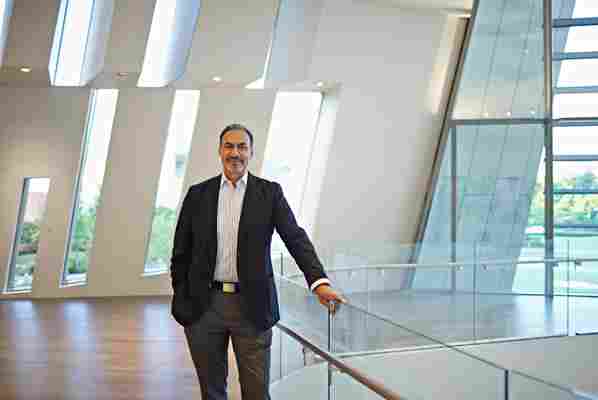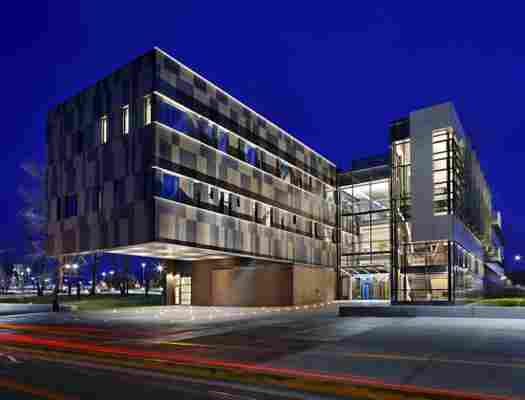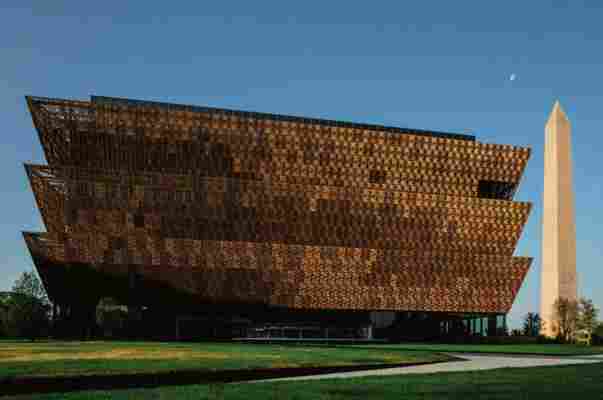AD Speaks With the Most Accomplished African-American Architect Living Today
By almost every measure, Phil Freelon is a remarkable figure. Most recently, the Philadelphia native led the design team, in partnership with David Adjaye, for the National Museum of African American History & Culture in Washington, D.C. The prolific architect also designed the Museum of the African Diaspora in San Francisco, the Harvey B. Gantt Center for African-American Arts + Culture in Charlotte, North Carolina, and the National Center for Civil and Human Rights in Atlanta. But Freelon is so much more than the buildings he designs. Not only does he visit elementary and middle schools to teach young kids about architecture, but he also founded the Phil Freelon Fellowship—a program that provides financial aid to one black students each year to attend Harvard University's Graduate School of Design. In a world where only two percent of architects in the U.S. are black, according to the National Association of Minority Architects, Freelon is a figure we have much to learn from. AD spoke with Freelon, the managing and design director of Perkins+Will's North Carolina practice, to discuss his influences, his hope for future black architects, and the emotions involved in designing a museum dedicated to African-American history and culture.
Architectural Digest: What first piqued your interest in architecture?
Phil Freelon: My family was always involved in the arts, be it performing or visual arts. My grandfather, Allen Freelon Sr., was a well-regarded painter during the Harlem Renaissance. I remember growing up sketching and being encouraged to express myself through art. I was fortunate that my high school offered a wide variety of arts, including graphic design and drafting. This allowed me to naturally stumble across architecture through some technical drawing classes. At the time, architecture seemed like the perfect match, since I was interested in mathematics, and geometry, and drawing. I was very much keen on using my artistic skills toward something that had more than just aesthetics to it. Architecture, it seemed, had real utility to it.
AD: Who were the architects who first inspired you?
PF: I was drawn to some midcentury architects such as Eero Saarinen and Charles and Ray Eames, because they were great architects who happened to extend their talents beyond buildings. They did furniture, photography, and more. The idea that an architect is a designer of spaces that are both small or larger scale—city planning or a door knob, for example—intrigued me. Julian Abele, who designed much of Duke University’s campus, was a massive influence on me, as was Paul Williams. These two black architects have been very formative throughout my career.

Phil Freelon is one of the most prominent architects in the country.
AD: Can you explain the philosophy behind the Phil Freelon Fellowship at Harvard's Graduate School of Design?
PF: I think that the challenge of broadening the profession and making it more inclusive has to be approached from different angles. So on one end, I do a lot of work with different elementary and middle schoolers. Understanding what it means to be an architect at an early age is vitally important, because if you’re not involved day one of college, then you’re already behind. On the other end of the spectrum, in graduate school, affordability is another barrier. That is why I, along with my colleagues at Perkins+Will, decided to fund a fellowship that targets underrepresented groups to come through and learn in a tremendous environment such as the GSD. The overall goal is to improve the profession by bringing in different voices and different visions. Without more blacks and other people of color, we all lose an opportunity for a more expansive viewpoint and a richer environment for creativity. And that begins with a more diverse workforce.
AD: Are you optimistic about the future for black architects?
PF: Well, I'm naturally an optimist. But the fact remains that only two percent of architects are black. And that statistic is even less if you count the number of blacks in academia for architecture as well. That was one of the main reasons I decided to also become a professor, so that I could help mentor young aspiring black architects within the classroom. And it’s through my academic lens that I remain optimistic because I see bright young folks of all types, in particular those of color, and I’m fascinated by them, and I do believe they will make the world, through the structures we live in, a better place.

North Carolina A&T State University Proctor School of Education, by Phil Freelon.
AD: Are there any young black architects we should keep our eye on?
PF: Edwin Harris is an architect who used to work with me at my firm before venturing off into his own sphere. Keep your eye open for him and his colleagues because they are a supremely talented group who will be making some serious noise here in the not-so-distant future.
AD: Have you faced a lot of adversity during your schooling and professional career?
PF: Adversity? Sure. It’s just the fact of living in this country and being an African American. But again, as an optimist, I’m not here to complain about it. I often tell my colleagues, it’s very much like complaining about getting wet on a rainy day. There’s a solution: Since you can't make the rain go away, you should focus on using an umbrella. At the end of the day, instead of dwelling on any prejudices in the workforce, I have always been of the philosophy that if you work your tail off and become better than your peers, then your work will speak for itself, no matter your race or color. And that’s all the client ultimately cares about, the finished project. So that’s what I focus on. The rest is just noise.

The National Museum of African American History & Culture in Washington, D.C., which opened last September.
AD: What was the experience of designing the National Museum of African American History & Culture like?
PF: Of course, it was an incredible opportunity and a very emotional one. I wanted to make the African-American community proud as well as my family and ancestors. Sure, there were some anxieties that went into my initial concepts. But what I realized early on in the process was that, without knowing it, I was preparing my whole life for this project. I truly hope that came through in the final design.